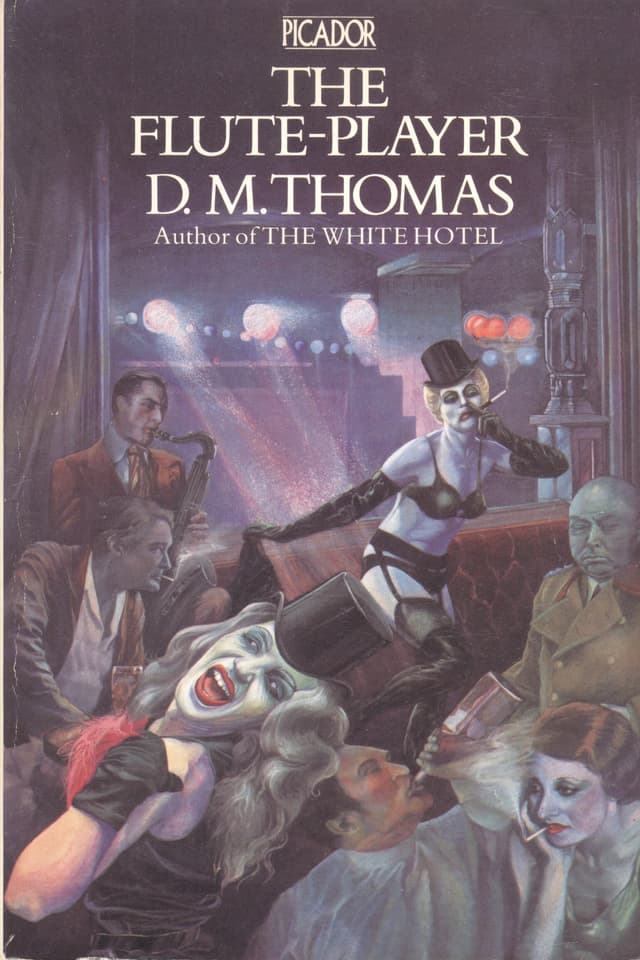
Book Review Summary: The Flute-Player
Introduction
"The Flute-Player" by D.M. Thomas is a captivating novel set in Leningrad, a city under totalitarian rule. The story revolves around Elena, a flute player who serves as a constant inspiration for a group of artists, poets, sculptors, painters, and playwrights. Through her unwavering spirit, Elena brings beauty and hope to their lives amidst the chaos and oppression. This article will delve into the author's background, analyze the views of readers, and provide reasons for both recommending and not recommending this book.
About D.M. Thomas
D.M. Thomas, born in Cornwall in 1935, is a renowned author known for his extraordinary writing style that captures extreme violence, suffering, sexual desire, and beauty. His first novel, "The Flute-Player," won the Gollancz Pan/Picador Fantasy Competition. Thomas is also celebrated for his collections of verse and his translations of Russian poet Anna Akhmatova. He has received numerous accolades, including the Los Angeles Fiction Prize, Cholmondeley Award for Poetry, and Orwell Prize for his biography of Alexander Solzhenitsyn. Thomas resides in his native Cornwall, England.
Analysis of Views
- Atmosphere and Empathy: Readers praise the addictive atmosphere of the novel, which immerses them in the harsh realities of war and poverty. The author's ability to evoke emotional depths through plain prose is highly commendable. The story expands readers' empathy by introducing them to individuals from different backgrounds and recontextualizing their experiences through artistic mediums.
- Value of Art and Friendship: The novel highlights the heightened value of artwork and aesthetic experiences in a war-torn city. Art serves as a beacon of hope amidst the darkness, bringing people together and providing moments of beauty. Friendship and love also gain significance in this environment, with characters finding strength in their connections to one another.
- Fascinating Tension: The tension between imagination and reality is explored through Elena's commitment to her friends and lovers. The author skillfully navigates the boundaries between fantasy and reality, revealing how necessity can fuel creativity and resilience in the face of adversity. This tension adds depth to the narrative and provokes thoughtful reflection on the role of art in shaping our lives.
- Lack of Specific Details: Some readers found the novel lacking in specific details about the time and place, which made it challenging to fully immerse themselves in the story. They appreciated the mystery and complexity that arose from this absence of specificity but felt that it could have been more fully developed.
- Mystery and Complication: For those who enjoy mystery and intrigue, "The Flute-Player" offers an engaging exploration of a dystopian society where artistic expression is suppressed. The novel delves into the complexities of life under oppressive regimes and provides a glimpse into the struggles faced by those who dare to defy the status quo.
Reasons for Recommendation
- Engaging Atmosphere: Readers are captivated by the atmosphere of the novel, which immerses them in a world filled with war, poverty, and state paranoia. Thomas's ability to evoke emotional depths through plain prose creates a powerful reading experience that lingers long after finishing the book.
- Empathy-Building Storytelling: The novel expands readers' empathy by introducing them to individuals from diverse backgrounds, recontextualizing their experiences through artistic mediums. This exploration of empathy adds depth to the narrative and fosters understanding of different perspectives.
- Exploration of Artistic Value: "The Flute-Player" highlights the value of artwork and aesthetic experiences in a war-torn city, showcasing how art serves as a source of hope and resilience amidst adversity. The novel provides readers with a deeper appreciation for the power of art to transcend even the most challenging circumstances.
Reasons for Not Recommendation
- Lack of Specific Details: Some readers found the absence of specific details about date, time, and place in the novel to be a drawback. While they appreciated the mystery and complexity it created, they felt that it could have been more fully developed to enhance their reading experience.
- Challenging Content: A few readers found the book relentless and emotionally taxing due to its portrayal of Elena's suffering under oppressive circumstances. They felt that the author was exploiting Elena's pain to make a point, which led to feelings of discomfort and disgust.
Conclusion
"The Flute-Player" by D.M. Thomas is a thought-provoking novel that delves into the struggles faced by artists living under totalitarian rule. Through Elena's unwavering spirit, Thomas creates an engaging atmosphere that captures readers' hearts while expanding their empathy for individuals from diverse backgrounds. The exploration of artistic value and the tension between imagination and reality adds depth to the narrative, making it a compelling read for those interested in dystopian societies or those seeking a deeper understanding of human resilience in adverse circumstances. While some readers may find certain aspects challenging or lacking in specific details, overall "The Flute-Player" offers a powerful exploration of art, friendship, and the human spirit in times of turmoil.